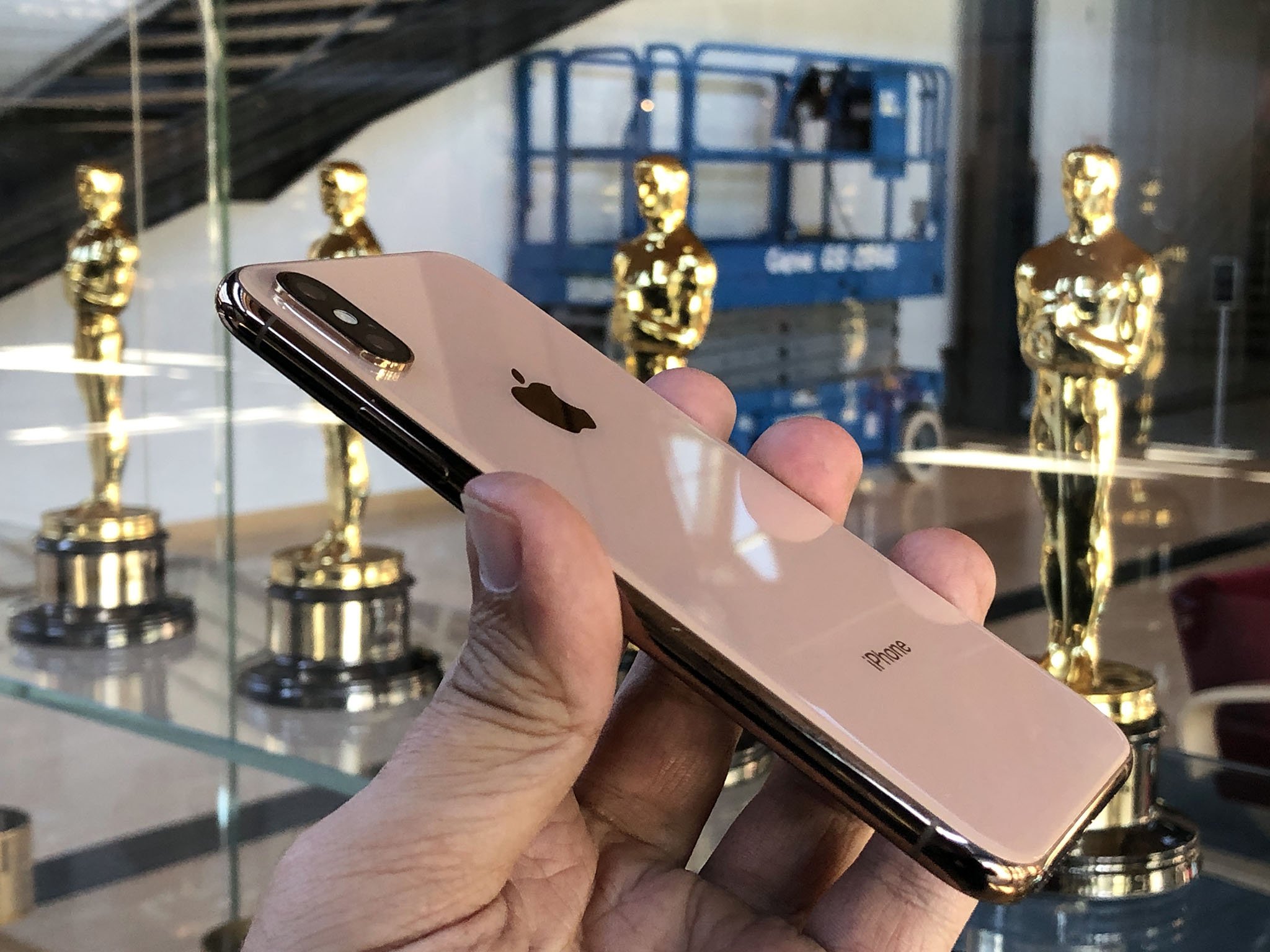
Somehow, probably by infinite-looping around the Apple Park Ring until it hit 88mph, Apple was able to send tomorrow's iPhone hurtling back in time almost a year. As a result, if you spent a few hundred bucks more and learned some new gestures, you've been living the last eleven months in the bezel- and Home button-free future.
But, as basically every sci-fi plot-twist ever has shown us, time travel is never without consequence. By releasing tomorrow's iPhone last year, what was Apple going to release now, today? The answer, of course, was and is — and maybe will be, temporal pardoxes are hard! — an S-type update. Because, as much as some people dislike the iterative in-betweens, nobody likes nothing.
As a result, I'm sure almost every review for the next long while is going to perseverate over a single, utterly predictable question: Whether iPhone X owners who picked up their little piece of the future last year should consider upgrading to an S-enhanced present this year.
Spoiler alert: The people who bought the iPhone X last year were either constant early adopters or eager to upgrade then so they wouldn't have to wait until now. They'll either automatically get an XS as part of one of those increasingly common annual upgrade programs or they'll just keep on keeping on until they need the next something new. They know that. Based on how iPhone XS was introduced as a new iPhone X, not an all-new iPhone, Apple knows that. It's just the rest of us nerds who have to get better at remembering it.
It's everyone else, the ones who are still undecided about this whole next-generation phone thing, who still own older iPhones or are Android curious, who maybe think the iterative in-between is really the new model done right, thanks to a year of early adopter beta tester fed fixes and improvements, who may still be undecided about upgrading. Wondering if now might finally be time to hand off or down their old iPhone or Android, and embrace not some notchy future, but the bezel-less present.
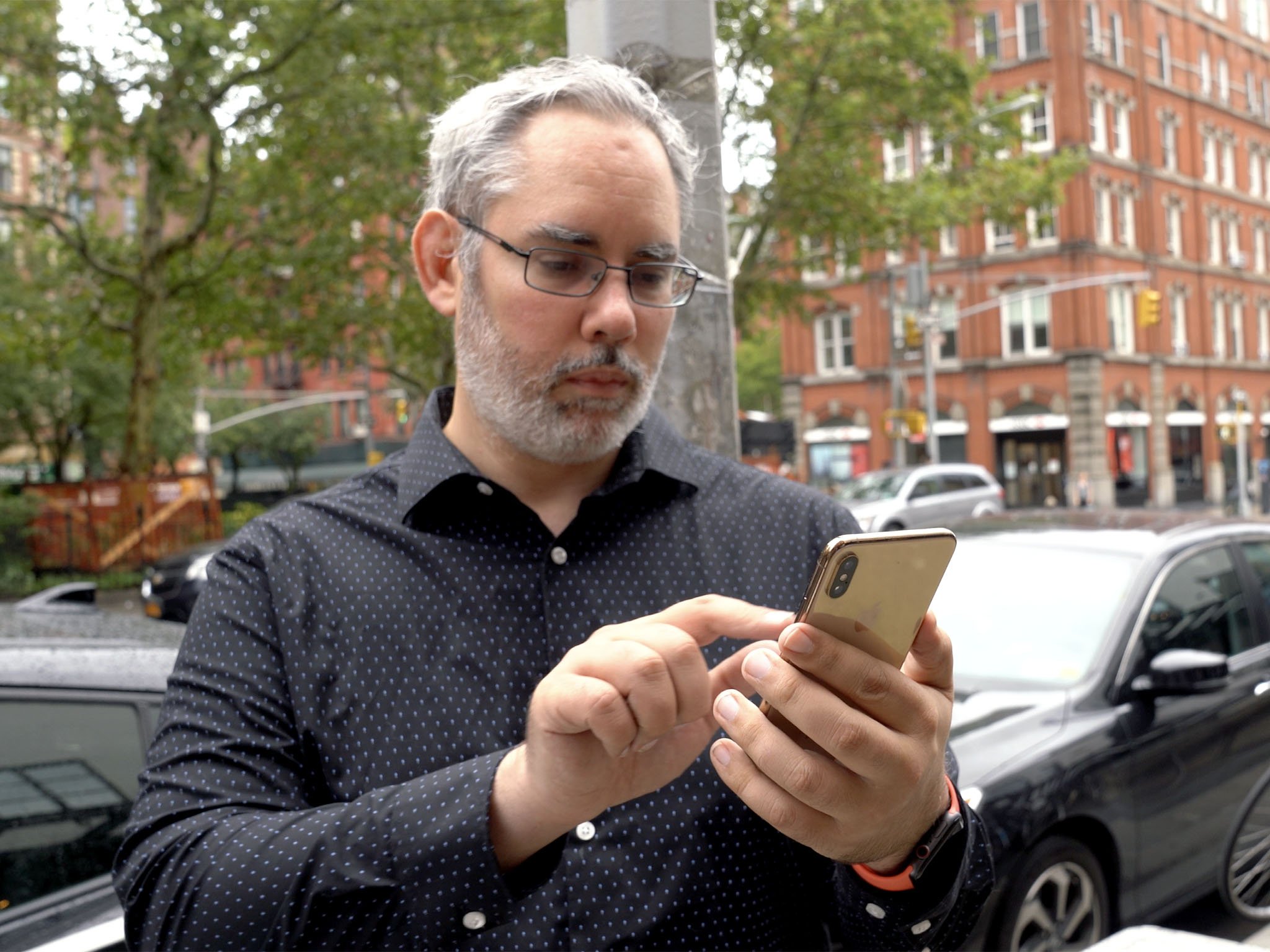
For them, the people who've spent the last year looking at that edge-to-edge display, HDR video, and fluid navigation, at Face ID, "depthy" selfies, and Animoji, and at almost every phone from almost every vendor that's tried, and largely failed, to copy it, the iPhone XS and the bigger iPhone XS Max could be compelling.
I think that's exactly the customer Apple is aiming for this year. And I've spent the last week trying to figure out if the starting-at-$999 iPhone XS and starting-at-$1099 iPhone XS Max really are the phones to do it.
iPhone XS in Brief
For people who want:
- Edge-to-edge design.
- Optically stabilized ƒ/1.8 and ƒ/2.4 dual-camera system.
- Depth-aware front-facing camera.
- Face ID biometrics.
- A big 5.8 or bigger 6.5-inch display.
- Gold!
Not for people who want:
- Classic iPhone design.
- Home button.
- Fingerprint identity biometrics.
- Lower pricing.
- Android
Bottom Line
If you didn't like the iPhone X and its notched face, there's very little about iPhone XS that'll change your mind. If you were interested in iPhone X but weren't ready to take the risk — or front the cost — on the first iteration, then the second generation has a lot to offer. It takes everything Apple set out to do with the original and makes it better. Face ID is faster. A12 Bionic makes everything fly. Like, FLY. The cameras have adjustable blur and, thanks to Smart HDR, can capture pictures the previous generation simply never could. There's stereo recording and playback offers wider separation and richer sound. And you can even get that edge-to-edge OLED display maxed out to 6.5-inches.
As total packages go, it's not something most current iPhone X owners should strongly consider, but if you're still running an older iPhone or Android, it is something you might seriously want to consider ditching your Home (or back) button for.
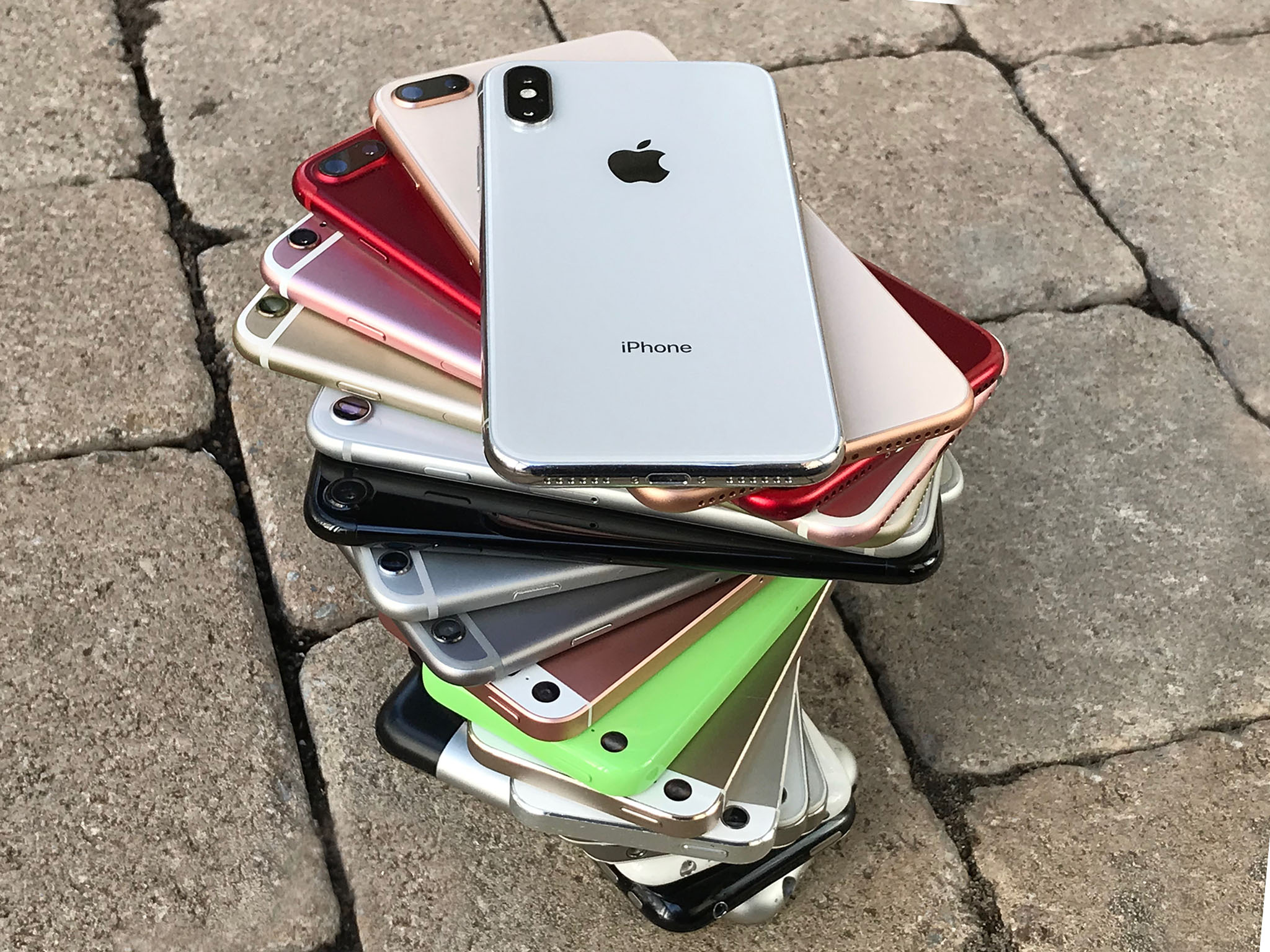
Previously, on iPhone…
Rather than recapitulate old features on new phones, I generally point people back to my previous reviews. That's especially important for "S" years like this one, where so many of the features critical to the XS and XS Max, including the OLED display and the True Depth camera system, debuted with last year's model.
iPhone XS Unboxing
At this point it's just weird that Apple is still including a 5-watt USB-A charger in the box. Sure, technically wired and slow is the best way to charge your iPhone but, for most people, most of the time, the tiny fraction of battery life you lose charging fast and hot — especially in the age of aggressive charge management — simply isn't worth the loss of convenience.
https://www.instagram.com/p/Bn3sQWqg_Rq/?taken-by=reneritchie
It's also three years post UBC on MacBooks and Apple still isn't including a USB-C cable in the box, not even a USB-A to USB-C adaptor. In fact, the 3.5mm to Lightning adaptor, which Apple included in the iPhone 7, iPhone 8, and iPhone X boxes is gone now. So, we're expected to have switched completely over to Lightning for audio but not USB-C for data or charging? I know Apple has all the numbers to make the best choices for its existing customer base but over-serving that customer base is seldom the wrong decision and it's usually the type of decision we expect from Apple.
How much does it cost to chamfer an edge or get the precisely right depth and layering to a finish? Apple spends a fortune seeing to every conceivable design detail on the phones themselves but then don't continue that commitment through the to the accessory experience.
It's baffling, at least to me, and something I hope Apple executives reconsider going forward.
iPhone XS Max
The biggest news about iPhone XS is literally the biggest news: A 6.5-inch version Apple is calling "Max". It looks like iPhone 8 Plus with a shave and a haircut. Seriously, you need to see it to believe it.
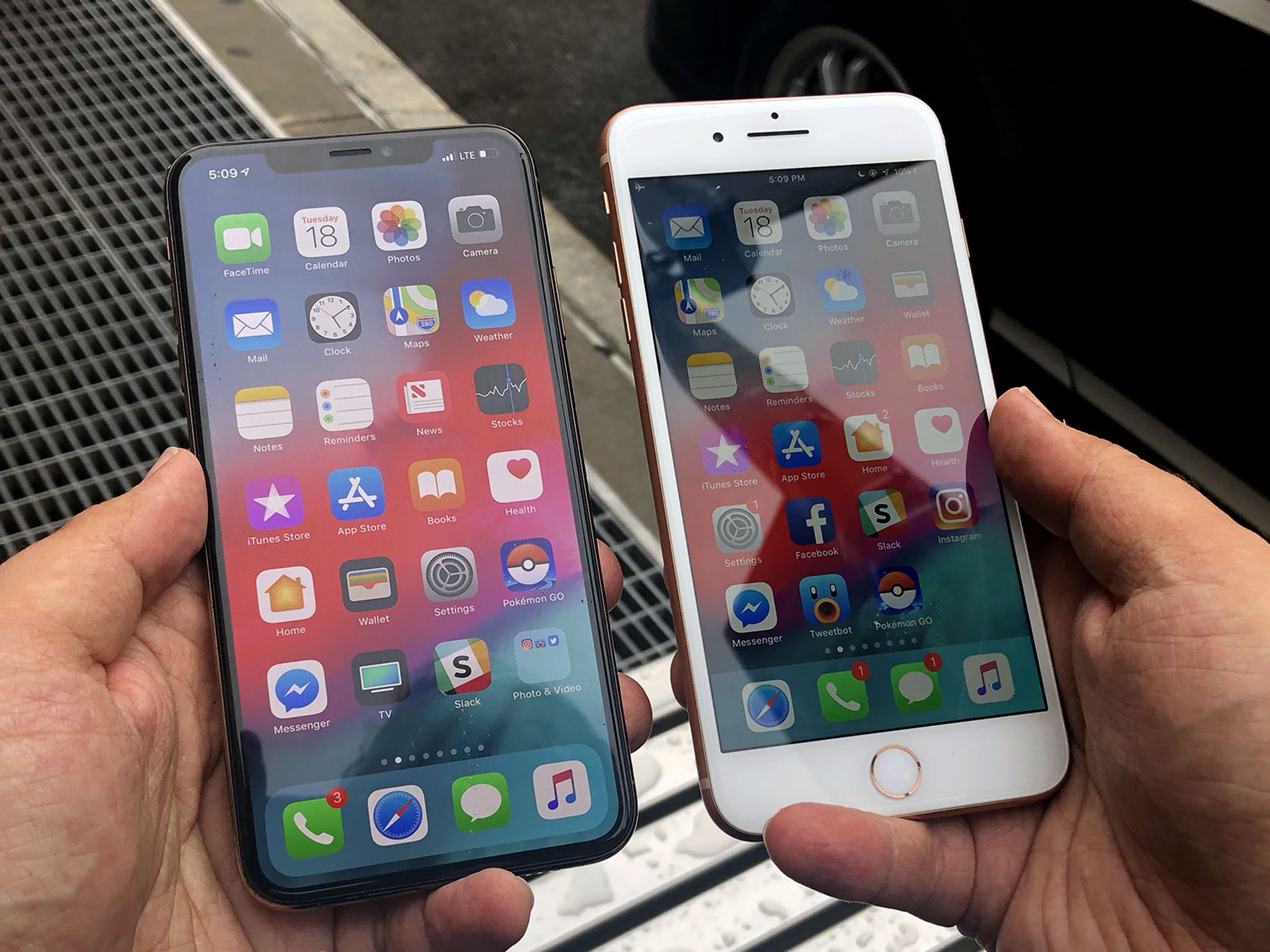
Now, confession time — I've been having some trouble easing into that name. Max. Seeing and hearing Apple use it isn't "your parents reading from Urban Dictionary" weird but it's close. Aside from sounding like Macs, it comes off as more than a little over-the-top. Like "MAX EXCITE!" (Which, Ironically, is a phrase I personally use far too often...)
But maybe that's exactly what Apple's going for here? Either way, but this time next year — hell, by this time next month — I doubt any of us will even think about it anymore. Not so sure? Just ask "iPad".
I get why Apple didn't stick with "Plus". In previous years, "Plus" versions weren't just bigger, they were better. Notably, they had higher screen densities, superior cameras including, for the last few years, dual camera systems, and more memory.
That's not the case with "Max". This year, aside from the physical size, both models are identical. Same 458 pixels-per-inch (ppi), same dual camera systems, and — sweet Christmas! — even the same 4GB of memory.
iPhone XS Max is simply a bigger iPhone XS.
Because Max is bigger, Apple can squeeze in more pixels — 2688x1242 instead of 2436x1125. If my math is right, that's more than a standard Retina iPad like iPad mini or the 9.7-inch iPad. Also: A larger battery to help power all those extra pixels. But that's it. That's all.
Differentiating based solely on size is something Apple has done, off and on, with the iPad lineup as well. It started with iPad Air and iPad mini 4 and happened again most recently with the second-generation iPad Pro 12.9 and the debut iPad Pro 10.5. I'm not sure how it'll affect Apple's average sales price (ASP), which has been trending higher thanks to the enticingly exclusive features of the highest-end models. But, having the same features in both flagships is absolutely better for customers.
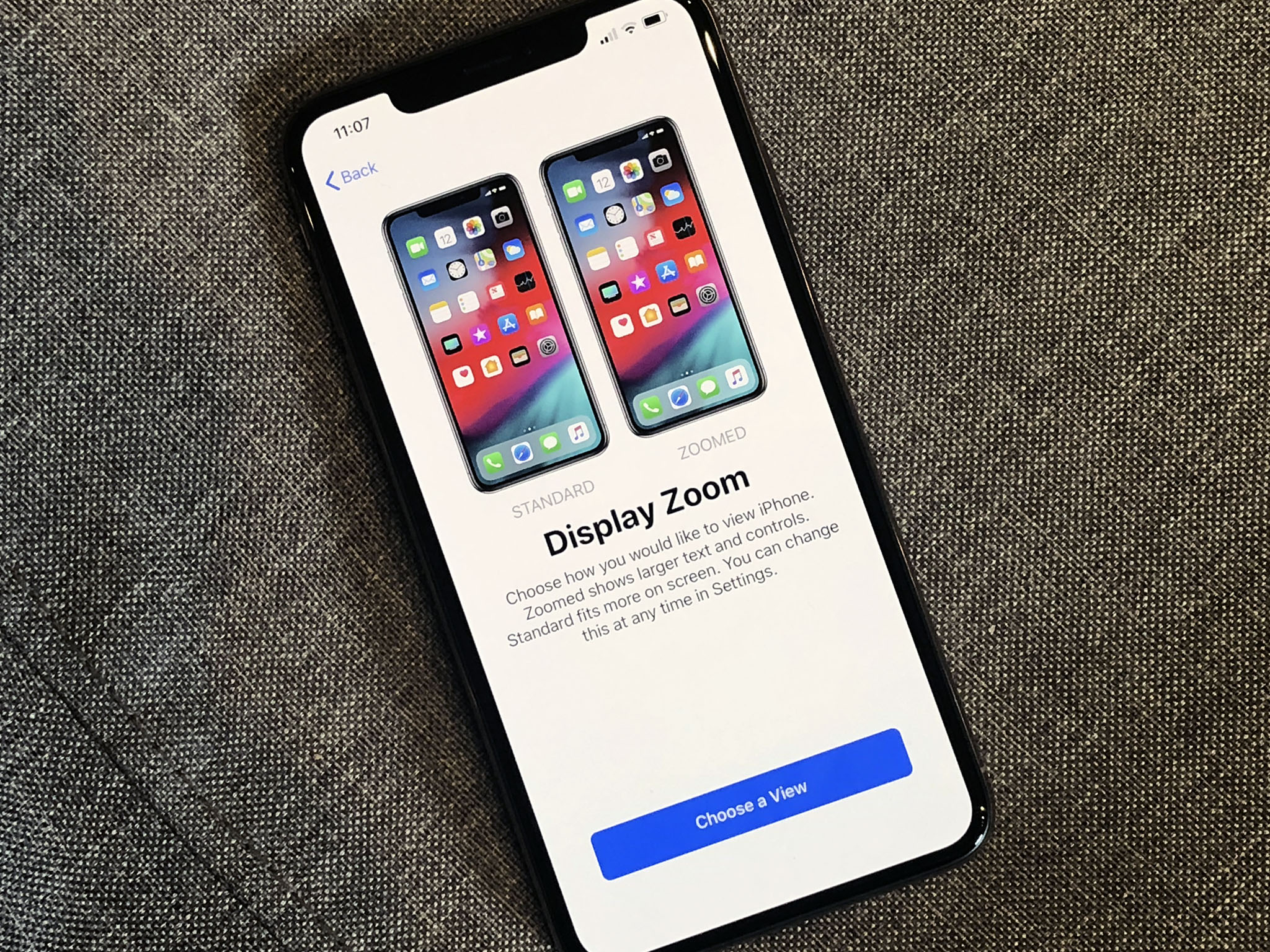
Of course, size itself can be seen as an exclusive feature. For some, the more expansive, more legible (now including the much-anticipated return of Display Zoom), more pixel-full 6.5-inch XS Max will be well worth the extra $100 Apple's asking for it. Others, though, will see the more compact, more pocketable, more one-hand-able 5.8-inch XS as the sweet spot, save themselves a hundred bucks, and smile so wide while doing it.
Personally, I've gravitated towards the bigger iPhone ever since Apple introduced it. Other than my Apple Watch, my iPhone is the one device I have with me everywhere and I can use anywhere, and I want to be able to do as much as I possibly can with it. That's including both the display size and the camera.
For the last year, though, I've been on the 5.8-inch iPhone X because it was so much screen in so little a package. Now that the cameras are no longer a distinguishing factor, will I stick with that size or will I escalate up to 6.5?
Big phone vs. tiny tablet is something I've joked about in my reviews for years. But this is no joke. At 6.5-inches, it's like iPhone X had a baby with iPad mini.
That's especially true in landscape, where, like Plus-sized iPhones before it, you get the iPad-style split view layout in apps… even though you still miss out on the functional difference in aspect ratio and on key features like side-by-side apps and Picture-in-Picture. (At this point along the phone maturity curve, those no longer feel like crammed-in complexities. They feel like missing functionality.)
Holding the XS Max, it feels about the same to me as the previous Plus models. It's just a tad slimmer, but not that I notice. That edge-to-edge screen, though… that you can't miss.
Most of us will need to swipe down for Reachablity to get to the top half and tap into the one-sided keyboard to type one-handed (or just give up and treat it as a two-handed device). But what you get for putting up with the bigger dimensions are those bigger dimensions. And it can be a hell of a reward.
I'm guessing I'll end up landing on Max. Still, I'm going to jump between both for a month and really make sure. Stay tuned.
iPhone XS Design
Wait, what? A design section? For a phone that's almost visually indistinguishable from the previous years? Isn't that like having a design section in a Porsche 911, Leica M-series, or Rolex Submariner review? Whatever. While iPhone XS looks almost visually indistinguishable from iPhone X, there are some important distinctions both in how it looks and how it works.
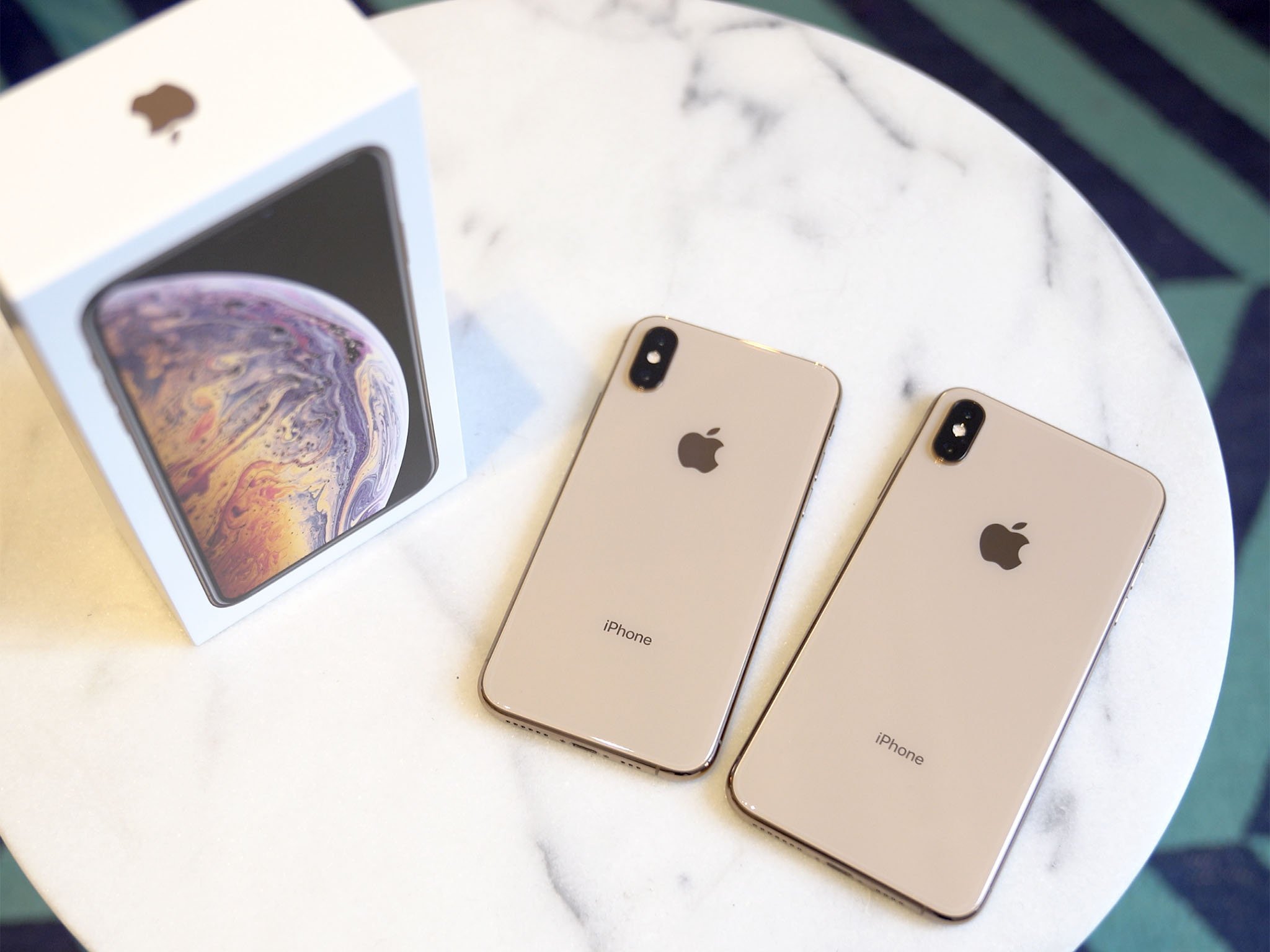
The most obvious in the new gold finish. After sticking with it on iPhone 8 but not pushing it to iPhone X last year, this year's iPhone XS and iPhone XS Max both come not only in silver/white and space gray, but gold. It's not the Champagne or Rose of 6s or 7, and not even the blush of 8, it's something new. Like the new steel gold Apple Watch that it so perfectly, intentionally matches, it's deeper to my eye, still rich but not at all ostentatious. A splash of pink, a touch of brown. It's still bling, just not as fussy about it. I like it. A lot.
Since you can't anodize stainless steel, Apple brought the gold back using physical vapor deposition. Theoretically, it makes the surface tougher and more resistant to abrasions. Diamond-like carbon (DLC), which Apple famously uses to make the Black Steel Apple Watch into something akin to adamantium, is a form of PVD. We'll have to wait and see how this, different, gold version holds up.
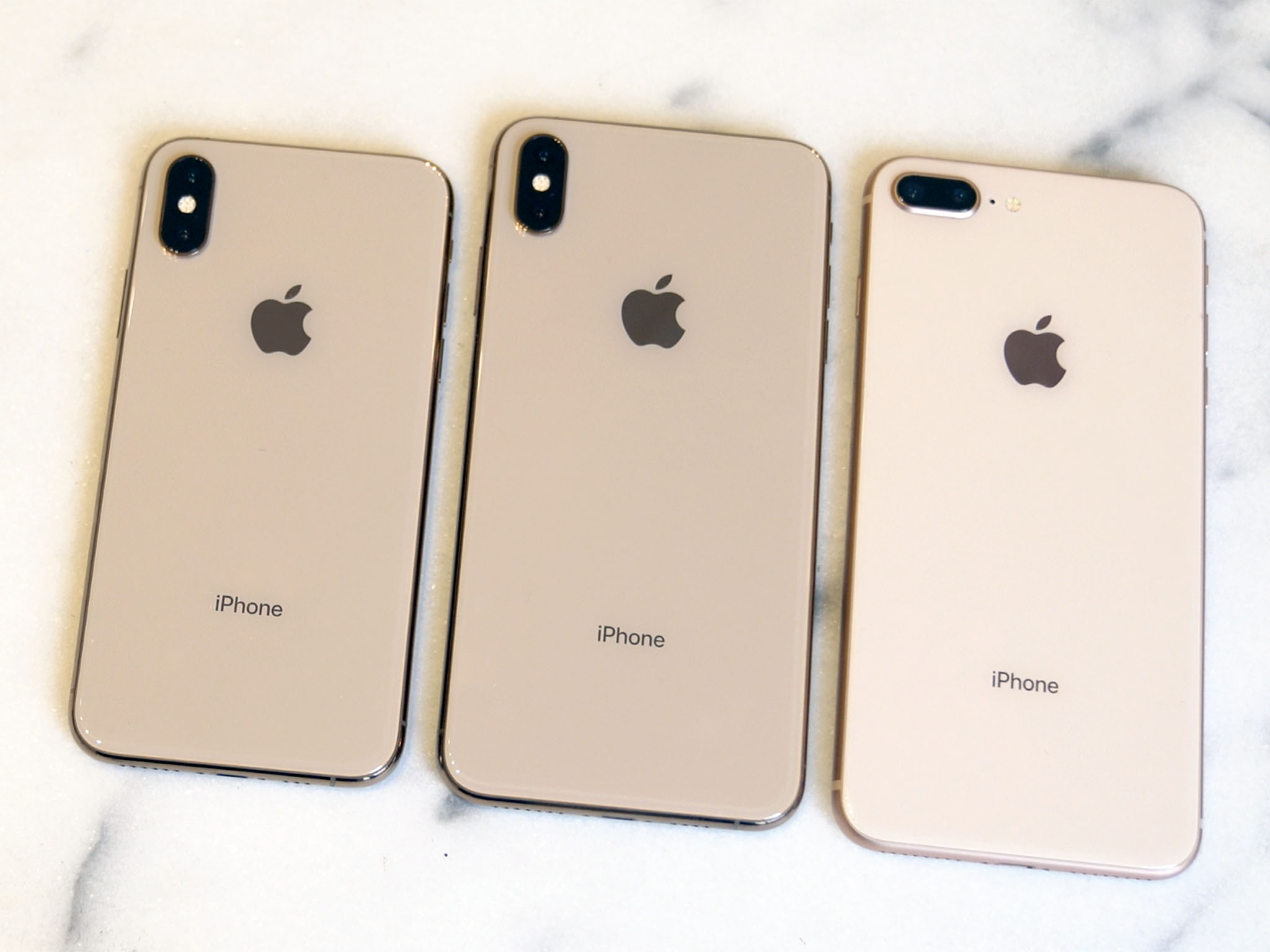
The bands are still beyond surgical grade stainless steel and the front and back are still glass, but even stronger glass than the already even stronger glass Apple and Corning cooperated on last year.
Chemistry is typically demands a trade off: The better a glass formulation resists scratches the easier it is to crack. The better it resists cracks, the easier it is to scratch. My iPhone X survived many a drop but it did pick up more than its fair share of battle damage.
This year, Apple says it's found a way to improve both. Take that, Chemistry. Still, Apple and Corning worked miracles notwithstanding, I'm eager to see how the XS holds up over time.
The display is still edge-to-rounded-edge OLED, video still Dolby Vision and HDR 10 compatible. Photos, though, including the fancy new Smart HDR ones I'll get to in a bit, get an even higher dynamic range. 60% according to Apple.
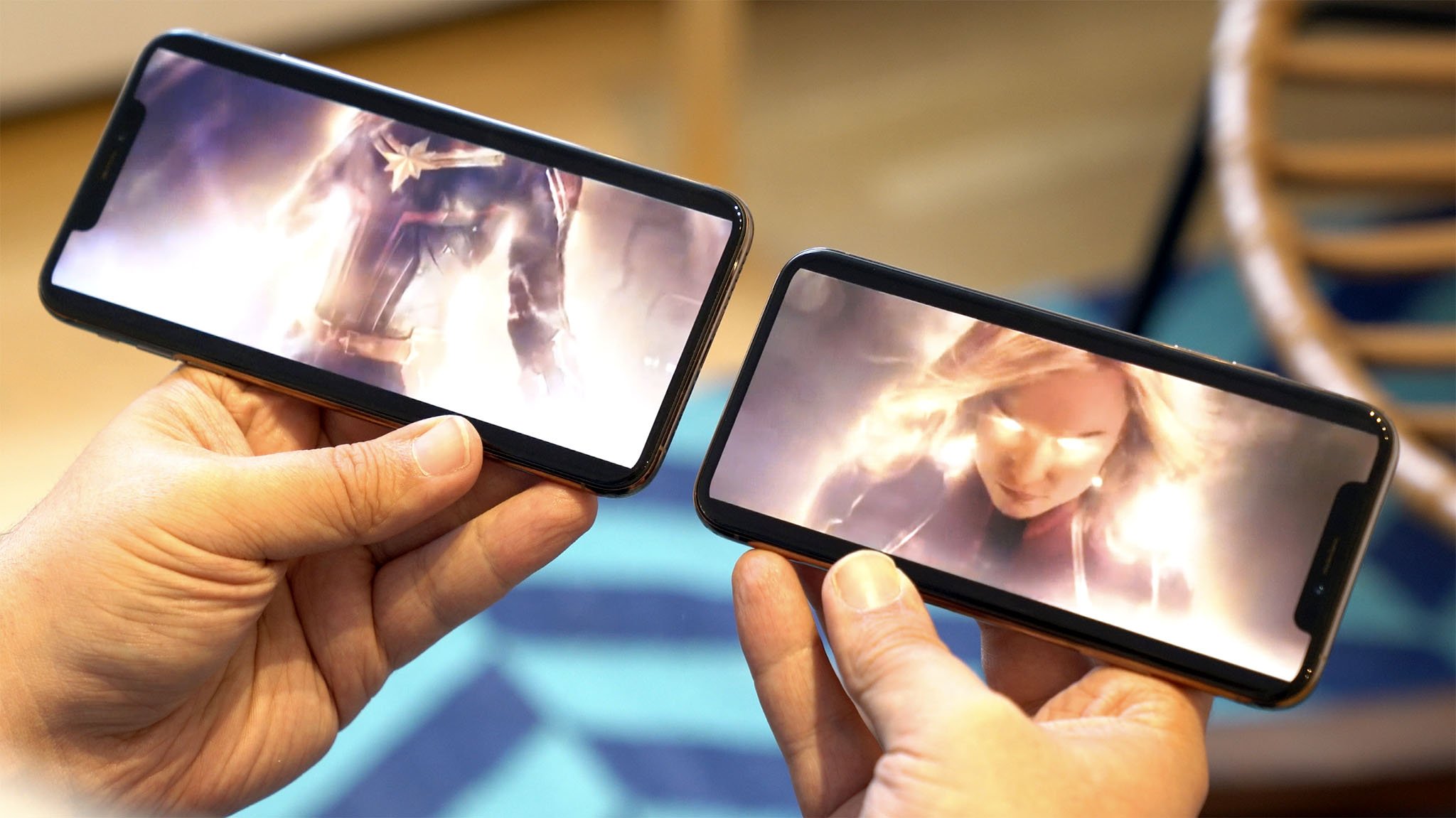
A short but necessary rant about the display: A year later and a lot of people who really should know better still insist on calling the OLED iPhone a "Samsung display" and crediting pretty much everything about it to Samsung. That's as much bullshit now as it was then. (Maybe even more, if rumors of dual sourcing turn out to be true.) Sure, Samsung manufactured the OLED panels using its PenTile process, but it did so to Apple's order and specifications. Calling them Samsung displays, regardless of how clever that may make some feel, is like calling the A11 or A12 Bionic a "TSMC chipset or the iPhone itself a "Foxconn Phone".
Regardless of who makes it, Apple designed it and implemented it. Apple fit it to the curves of the new casing, engineered the silicon to drive it, developed the anti-aliasing and the color-shift and burn-in mitigations, and has each one individually color-calibrated at the factory. And Apple folded it back on itself so it could get rid of the chin on the bottom of the phone, something that, a year later, almost no other vendor has been able to afford or engineer.
Good sourcing is definitely a requirement but it's far from the only one. OLED on the iPhone is something everyone from the Platform Technology to Industrial Design to Display teams deserve a ton of credit for — or, if you hate the way it turned out, all the blame.
The speakers are better on iPhone XS and iPhone XS Max as well. No, they're not Dolby ATMOS, because physics. But they are wide stereo now. I'm the opposite of an audiophile so iPhone speakers have sounded fine to me for years now, but people with much better ears than mine tell me these sound even better. I do notice much better separation from both channels and, in movies, can clearly hear Monster Trucks and Quinjets zooming from one side to the other, even as dialog somehow manages to stay eerily centered.
Like iPad Pro, if you spin your iPhone 180º while watching, the audio will spin with it. That keeps left on the left, and right on the right. (If you spin the portrait orientation, all bets are off and everything just sounds kind of centered and judgy because portrait video still isn't a thing to everyone.)
The bottom of the phone is now asymmetrical across the x-axis. Z- is still fine, but Apple had to add an extra antenna to the top and bottom to enable 4x4 multi-in multi-out (MIMO) and that came at the cost of matching grills.
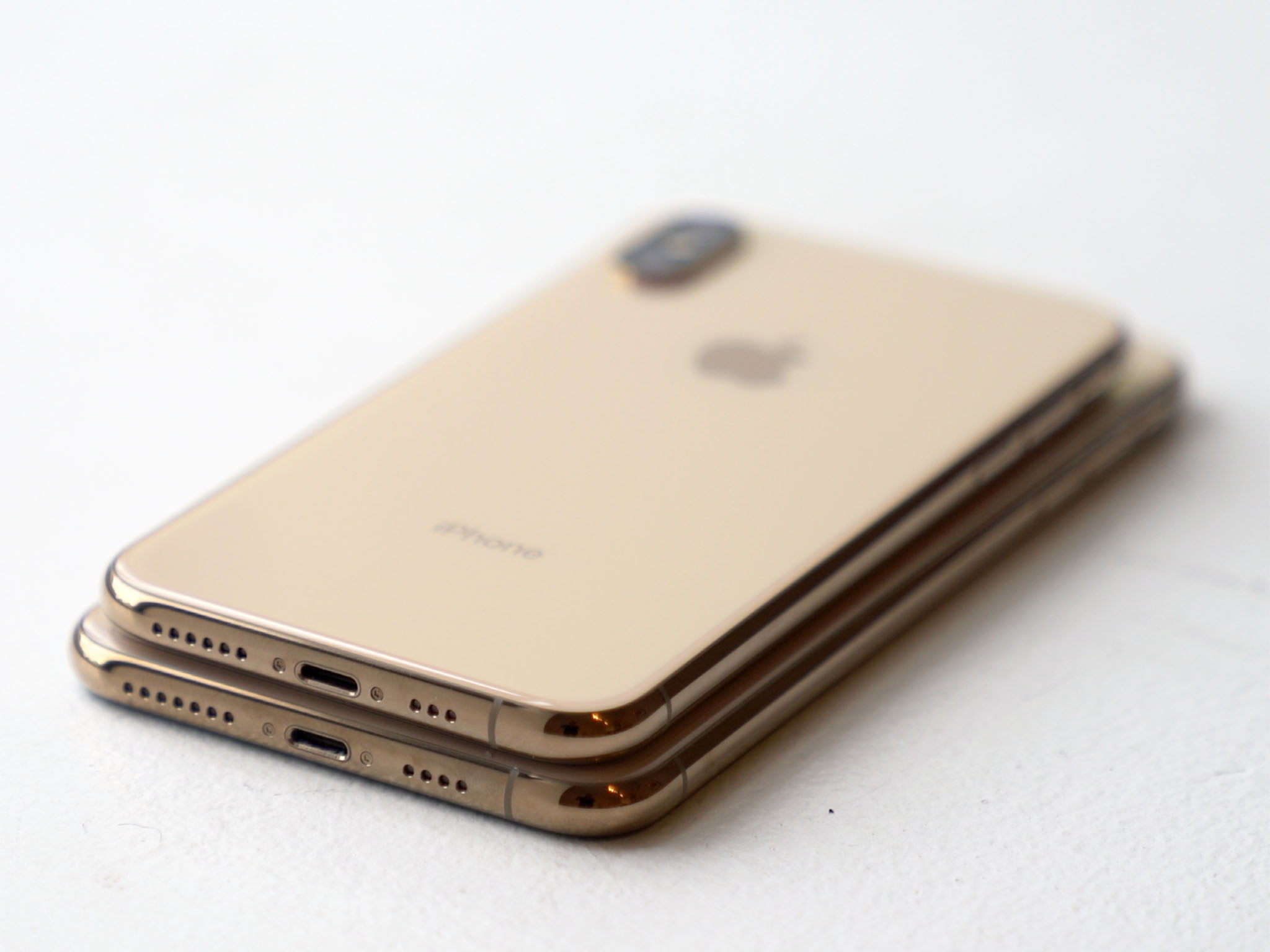
Yes, I can't unsee it. And I'm guessing it makes Jony Ive's eye twitch just thinking about it. But it doubles the effective ways iPhone XS can lock onto and keep a carrier signal, so I guess we'll just have to all put up with it for a while. Drowning our sorrows in Gigabit LTE, License Assisted Access (LAA — carrier aggregated unlicensed spectrum at 5 GHz), and Dual SIM support.
Dual-SIM support is shipping later this fall. In most places, it'll uses one nanoSIM and one built-in eSIM. In China, it'll use two nanoSIM. It basically means you can have two different numbers active on two different carriers at the same time and switch between them whenever you want or need to.
It works just fine with a paired Apple Watch, though if you go out running without your iPhone, you'll have to pre-select which carrier you're going to do out running with.
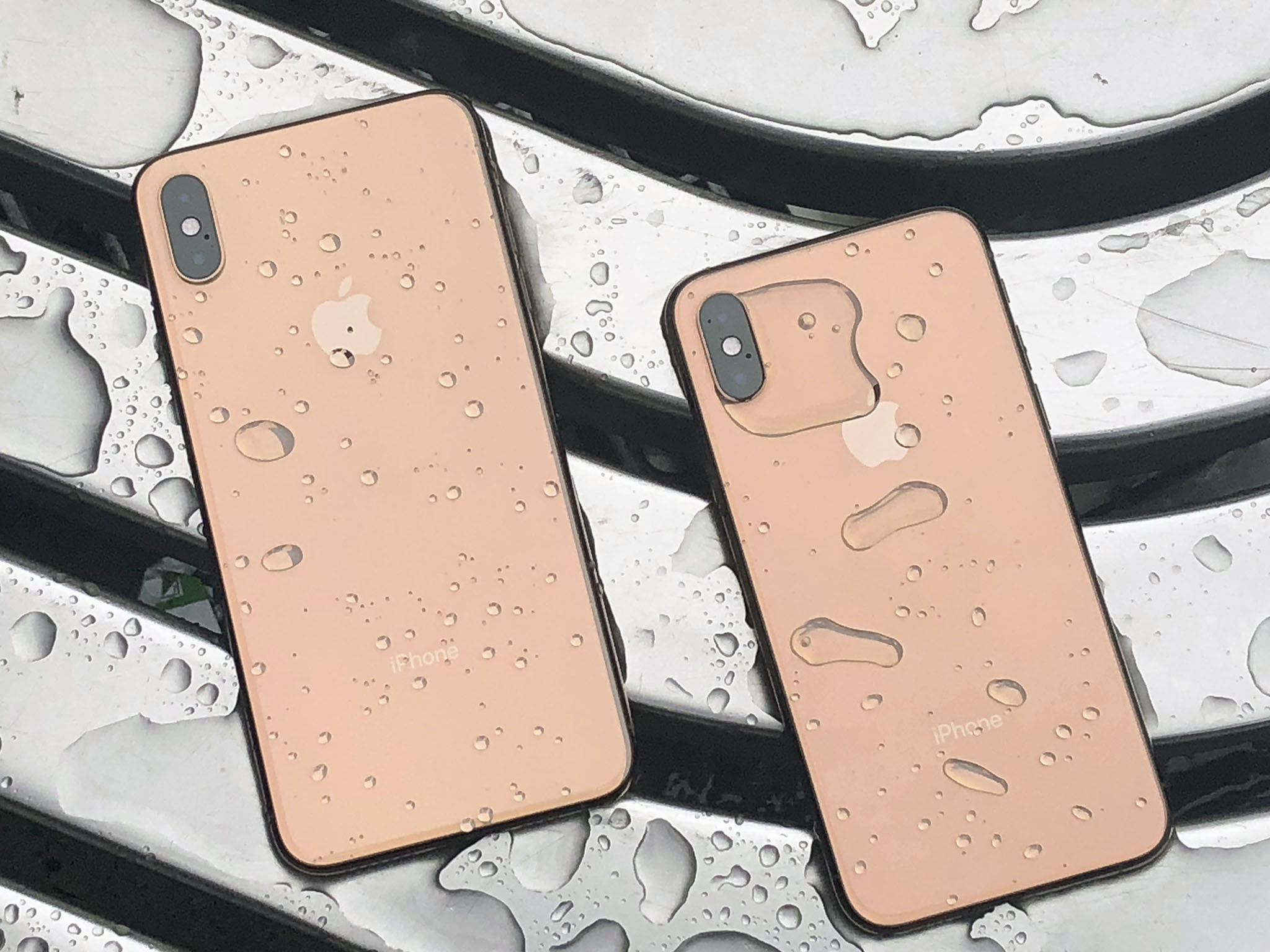
Particulate and liquid ingress protection — basically dust and water resistance — are even better now, rising to IP68, which, according to Apple's vendor set claims, means an iPhone XS that gets dropped in the drink can now survive at up to 2 meters for up to 30 min. Again, don't confuse this for swim or dive proofing, or for making it safe to use as an underwater camera. It's still so not. But, if you spill your favorite beverage on it, get caught in the rain, splashed on, or knock it into the bathtub or pool, chances are very good that, if you fish it out and clean it off quickly, it'll be just fine.
Inside, there's a new, tighter coil that makes the inductive charging system more efficient. It doesn't draw any additional power, it just uses the same power better. (And, like with processors, efficiency translates directly to speed.)
Apple also says the new design won't be as fussy about where exactly you place it on the inductive pad. That's great. Going wireless quickly loses appeal when you wake up next to a dead iPhone tipped just slightly off its sweet spot.
Battery chemistry still hasn't seen any significant technological improvements but Apple keeps improving all the technology around Lithium-Ion to eek out as much as it possibly can. iPhone XS is no exception. Apple says it gets slightly longer battery life than the X. I've been using both, side-by-side, for the last week and largely under the most brutal conditions imaginable: Roaming on AT&T.
Even though the battery on the XS is a year newer and far less abused, it still hung on impressively better. Enough that, despite the radios burning up in a desperate attempt to keep a signal, I could almost make it through a day. For the brief period of time that I was home, I aced the day no problem.
I'll have to do more tests, especially with the bigger battery on the bigger iPhone XS Max, but I'm hopeful that we've finally turned the corner from phones designed for light web browsing and mail reading to phones that can handle the constant screen, GPS, and data of our now social and gaming focused lives.
iPhone XS Bionic
A funny thing happened when Apple shipped the first 64-bit chipset on mobile in the iPhone 5S: It instantly catapulted to the head of the silicon pack. And the platform technologies team hasn't slowed down since. Not with the fusion high efficiency/high performance cores in iPhone 7, not with the neural engine in iPhone 8 and iPhone X, and not with the second generation Bionic in iPhone XS and iPhone XS Max.
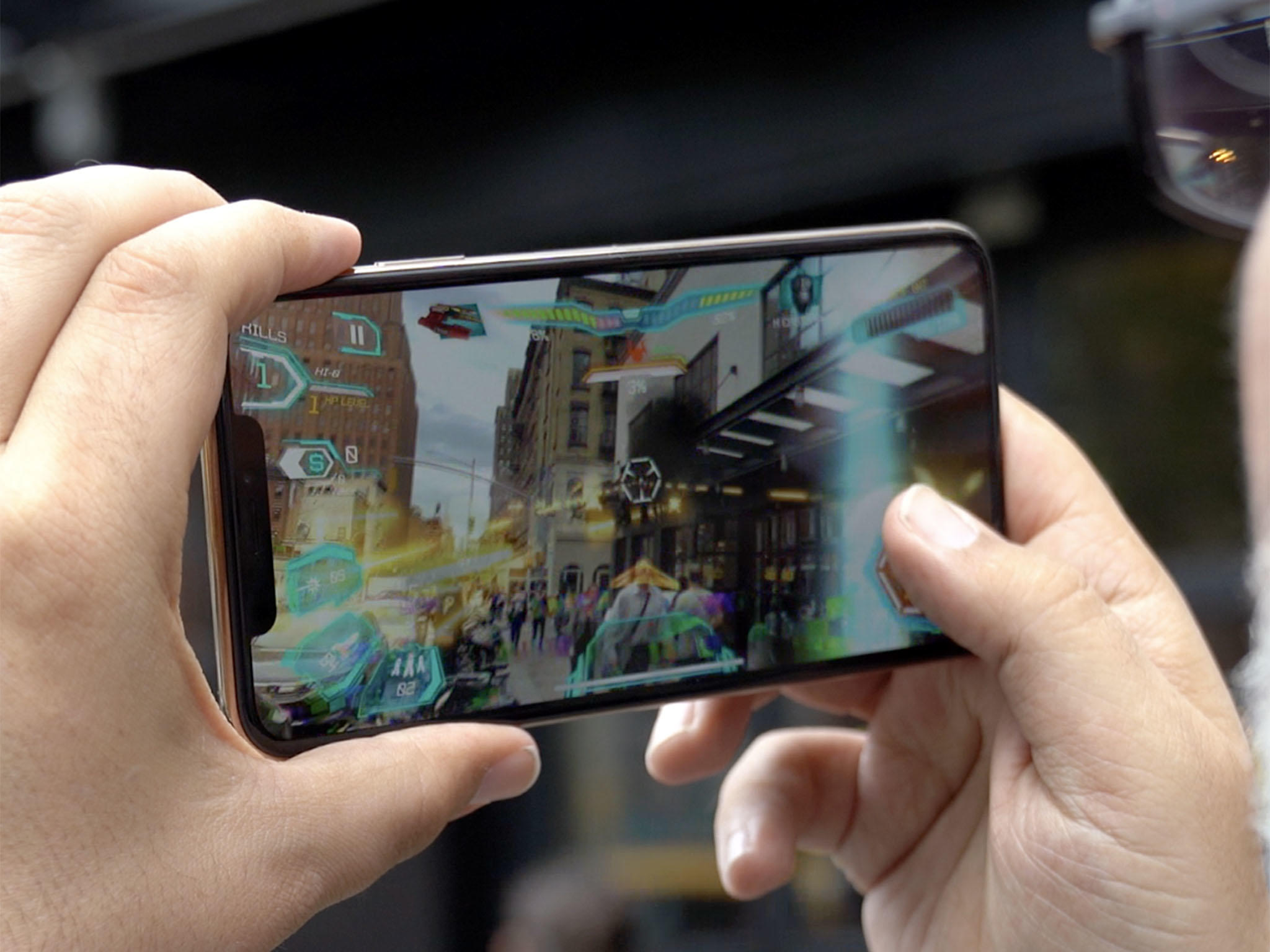
I've already explained a ton about why and how Apple is winning mobile silicon, but here's the TL;DR in pop-culture terms: If the old Bionic was the Six Million Dollar Man, the new Bionic is Iron Man (post-Extremis, of course.) And that keeps happening, in different but important ways, generation after generation.
It's 7nm now. Processes have become more marketing terms now than absolute measures, but this is the first commercial chip to ship at that tiny, tiny scale. Like forget Ant-Man shot in narrow depth of field tiny and think knocking on the door of the Quantum Realm tiny. That tiny.
Basically, it means is Apple can pack even more transistors into an even smaller die. Because performance is inextricably linked to efficiency, 7mn improves both.

The CPU is still 6-core fusion system, with two high-performance cores and four high-efficiency cores that can all be used together to really rock your socks off if and when needed. Those performance cores are now up to 15% faster and 40% more energy efficient. Those efficiency cores are up to 50% more efficient. In an industry where the explosive growth of mobile processing power has seemed like a hockey stick for years, those numbers might seem more modest. Like drum sticks. But, year after year, the gains are still adding up. (Apple's custom performance controller is still the secret sauce here . It's what coordinates all the tasks across to and across the cores.)
For the GPU, Apple's second fully custom design, the number of cores have gone up from 3 to 4. Tessellation and multilayer rendering and lossless memory compression have been folded in to, along with Metal 2 support, give it a 50% bump over last year's. Oh, that's where the hockey stick went… Basically, games, video editing, photo filters, and all other graphically intensive tasks may be more intensive than ever, but they don't feel that way any more. At all.
The biggest news is the Neural Engine. It's sky-rocketed from 2 cores to 8 cores, with multiprecision support, capable of 5-trillion calculations a second, and that makes it able to accelerate Apple's Core ML machine learning frameworks up to 9x — nine times! — faster at up to 1/10th the power than last year. It's also got smart compute which lets it decide, on the fly, whether any given task is better off being run on the CPU, GPU, or Neural Engine.
Forget hockey stick, that's rocket launch. (I'd call it ridiculous but in the time it takes me to type that, Bionic would have performed 15 trillion calculations and come up with 616 better words for it — and a second plan to beat Thanos.)
The Neural Engine Core recognizes frequent patterns, tries to proactively predict behavior, and learns what you do so it can help you do it. Faster and more easily, like JARVIS. So much faster, this year's Bionic can do a lot of Machine Learning tasks in real time. That lets you spin up AR experiences and map out the staging surface in a way that feels positively snappy. It also helps with Photo searches, applying intelligent filtering in apps, and more.
Face ID biometric authentication benefits not only from the more advanced Neural Engines, but faster algorithms and a faster Secure Enclave as well. Previously, when it worked, Face ID was so seamless it felt almost as though it was passive. Now it feels almost like it's not even there. (Combined with iOS 12's swipe-up-to-retry, I can't even remember the last time it failed on me.)
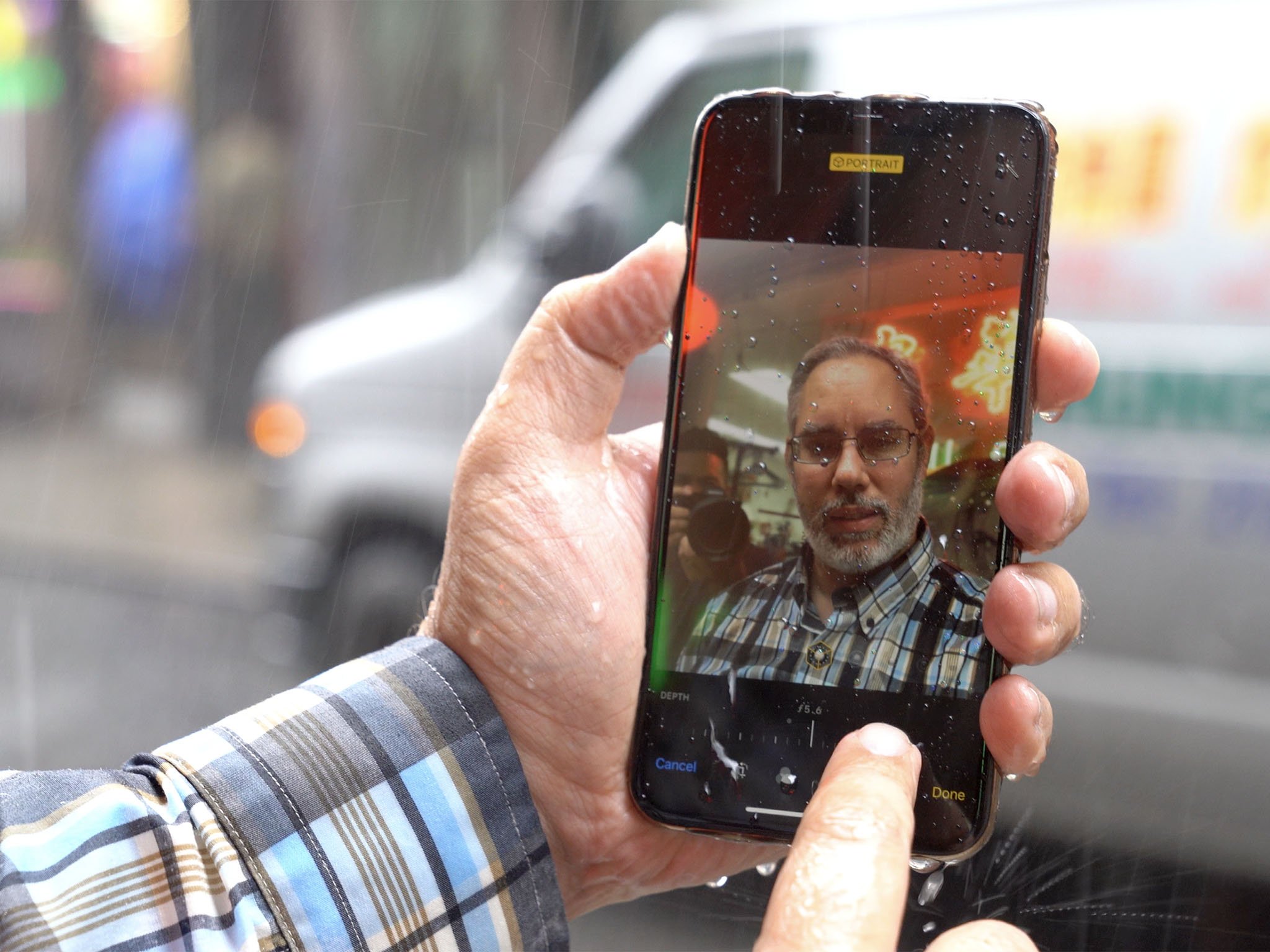
The new Neural Network also works with the new Image Signal Processor to make taking and editing pictures and video better than ever. That includes not only moving Portrait Mode from a custom but consistent disc blur effect to what's basically a full-on computational lens model that ingests and understand what's in a scene, and then applies a dynamic effect that can distort as it get further from center, or layer as different light sources come together.
It's like moving from photo filter to 3D render, in real time, and it gives both iPhone cameras, front and back, a real character.
Because of that, you can even change the depth effect. Currently in post, later this year in the live view, you can literally step it from f/1.4 to f/16 and watch as the computational lens model steps with it. It's still not the same as shooting with a dedicated camera and big hunk of glass, but it's so good you'll be wanting to reach for that camera and glass even less often. And that seems to be the driving goal of Apple's ISP and Neural Engine teams.
https://www.instagram.com/p/Bn4RbHdgJMn/?taken-by=reneritchie
There's a bunch of other cool stuff in A12 as well, including HEVC encoders and decoders to speed up 4K HDR and an audio subsystem. There's even a new, fast storage controller than can address up to 512GB of solid state chips.
So, yup, in addition to the aforementioned 4GB of memory, iPhone XS can come with up to 512GB of storage now as well.
Ultimately, though, A12 Bionic is what makes iPhone XS and iPhone XS what they are. Gold is great. New cameras are always better. But it's the silicon that currently makes Apple unmatchable.
iPhone XS Camera
If it feels like I've already covered a lot of the camera stuff in the silicon section, that's just the reality of modern computational photography. It's the bits that let us transcend the atoms. The artificial intelligence that propels us beyond physics. The… you get the idea.
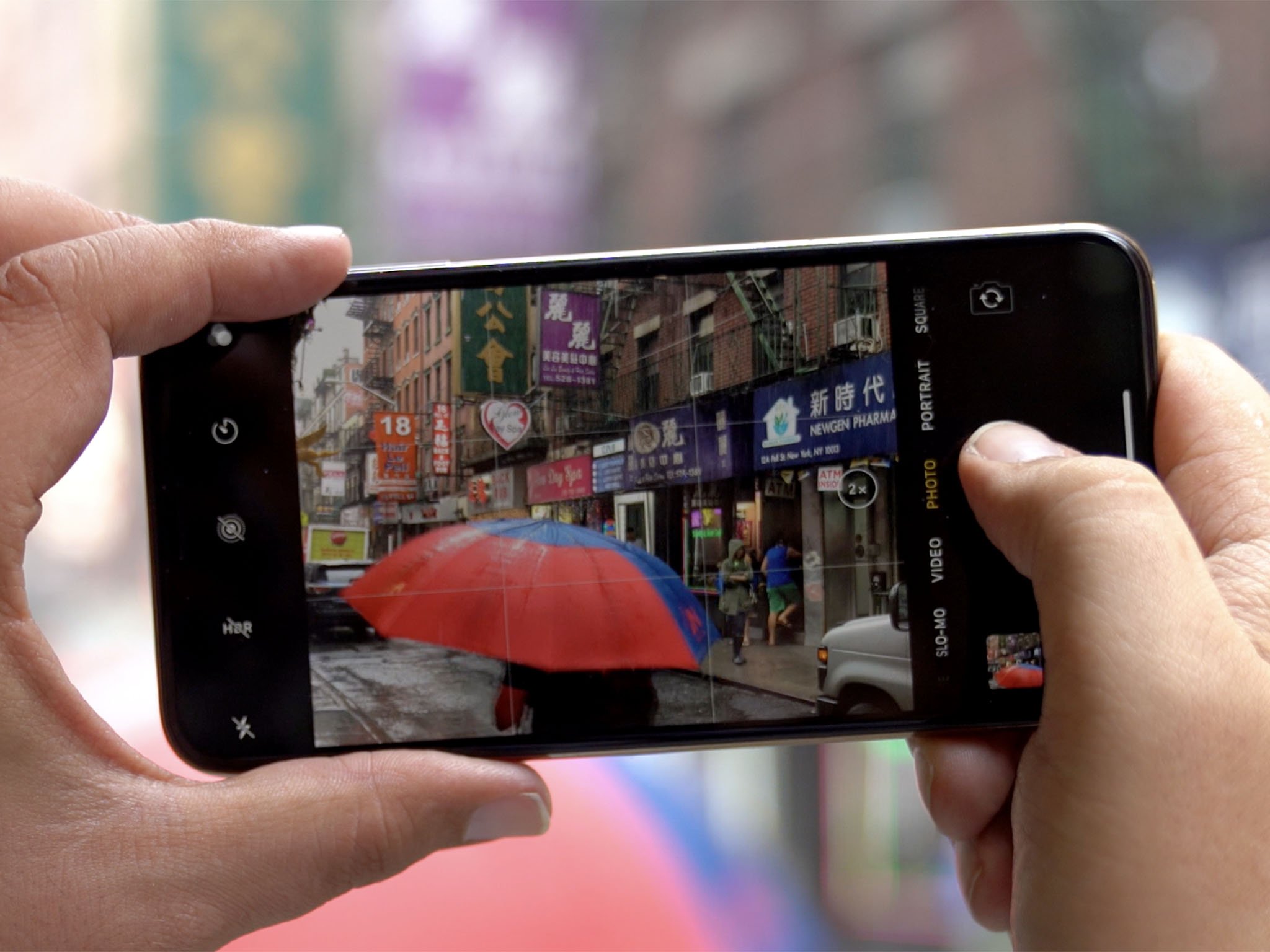
What I like about Apple, though, is that it's not so reliant on the computational stuff that it forgets about the photography. There are single-camera systems, without the benefit of Apple's True Depth, but with really good glass and algorithms behind them that can segmentation mask and disc blur the hell out of photos. So much so, many people prefer them to systems like Apple's that, via dual cameras or dot projectors manage to capture real depth data to combine with segmentation masking.
I like having both because, as I think will become clearer over a short period of time, real depth sensing isn't just a one Portrait Mode trick pony.
The new dual camera system on the back has the same telephoto capabilities as last year. The wide angle, though, has a new sensor with both bigger — 1.4um — and deeper pixels. Bigger pixels drink in more light to perform better in the dark. Deeper pixels prevent cross-talk and make for a clearer image.
The amount of Focus Pixels has been doubled, so auto focus is now twice as fast. So fast, you almost forget you can change the focus if you need to because you so seldom need to.
https://www.instagram.com/p/Bn4i5PqgP-p/?taken-by=reneritchie
The True Tone flash (not to be confused with the True Tone display, because confusing) now has advanced flicker detection so, even if you have to resort to the flash, you still maintain better white balance and color accuracy.
The True Depth camera on the front also has a new sensor that's twice as fast for blisteringly quick selfies.
A lot of the stuff is just plain better too, from the segmentation masking, to the Portrait Lighting effects, to the algorithms that detect and preserve real-world textures even in the face of compression schemes. It's incremental but it's noticeable in everything from the edges to the expanses.
On both the back camera system and True Depth, in addition to all the fancy stuff Apple's ISP has been doing for years, in combination with the Neural Engine, it's now fast and intelligent enough to do what Apple is calling Smart HDR.
Traditional HDR takes a normal photo, a slightly overexposed photo to grab shadow detail, and a slightly underexposed photo to preserve highlights, merges them together, and locally tone maps them to product the best image possible.
Smart HDR goes several steps further. Once the camera is open, it starts buffering so that there's zero shutter lag when you go to take the photo. That's not new. That it can buffer 4 frames now in order to better isolate and capture motion is new. And pretty spectacular.
At the same time, it's also capturing underexposed versions of each frame to preserve highlight details. And, once you take the shot, it's capturing a long exposure as well so you can get even greater details from the shadows.
The smarts in Smart HDR then takes over, figures out the best pixels from each frame, and produces a single, idealized photo.
And it's all being done locally on A12 Bionic. Yes, you can rest easy knowing your selfies aren't being used to feed any other companies military drone recognition programs... (I kid, but not really. It's terrifying and cheap services aren't going to keep Sarah Connor alive when the T 2 Million already knows what she looks like.)
The difference is most noticeable when you're shooting dark subjects on bright backgrounds, like a face against the sun. High contrast shots, like someone sipping coffee with the morning sky out the window. Those twilight moments when you wish your camera could capture what your eyes and heart see. And those high-impact action shots where athletes — or pets or kids! — just won't stop moving.
Video benefits as well. Apple showed some demo footage that looks like something out of a Spielberg movie, only better. You know, all shadows and light trails and fog and forests. Even then, you can get more color from around the higher contrasts then previously possible.
That's been the story of iPhone photography going on years now. The new camera only ever has one job: To capture photos and videos that the previous camera simply never could.
And, year after year, it keeps on achieving it.
iPhone XS Accessories and Apps
iPhone X marked a significant design change from every iPhone that came before it. iPhone XS, blessedly, retains almost the same size and shape as iPhone X. The differences are mainly around the camera housing. It's only a millimeter or so either way, but it's enough that some of your snugger, tighter cases might not fit right. Roomier cases should be fine, but test gently to be sure.
(My Apple iPhone X Leather Case fits well enough on iPhone XS that I have no problem using it.)
Screen protectors, docks, and other accessories shouldn't be affected by that but, if in doubt, check with the manufacturer.
Of course, adjustable accessories, like mounts, charging pads, and anything that connects wirelessly over Wi-Fi or Bluetooth should work just fine.
- Best iPhone XS accessories
- Best iPhone XS cases
- Best wireless charging pads for iPhone XS
- Best screen protectors for iPhone XS
- Best car mounts for iPhone XS
Since iPhone XS runs iOS 12, it's compatible with all the millions of apps in the iPhone App Store. That includes all the apps from Google, Microsoft, Facebook and Instagram, Twitter and all the games you could imagine. If you're coming from either Android or Windows Phone, you'll feel right at home.
Support does require developers to update, and a year later some, like Instagram, still seem lost in the weeds. iPhone XS Max may require additional tweaks due to its size and split view capabilities in landscape.
There's also a whole slew of augmented reality (AR) apps that are especially great on iPhone XS.
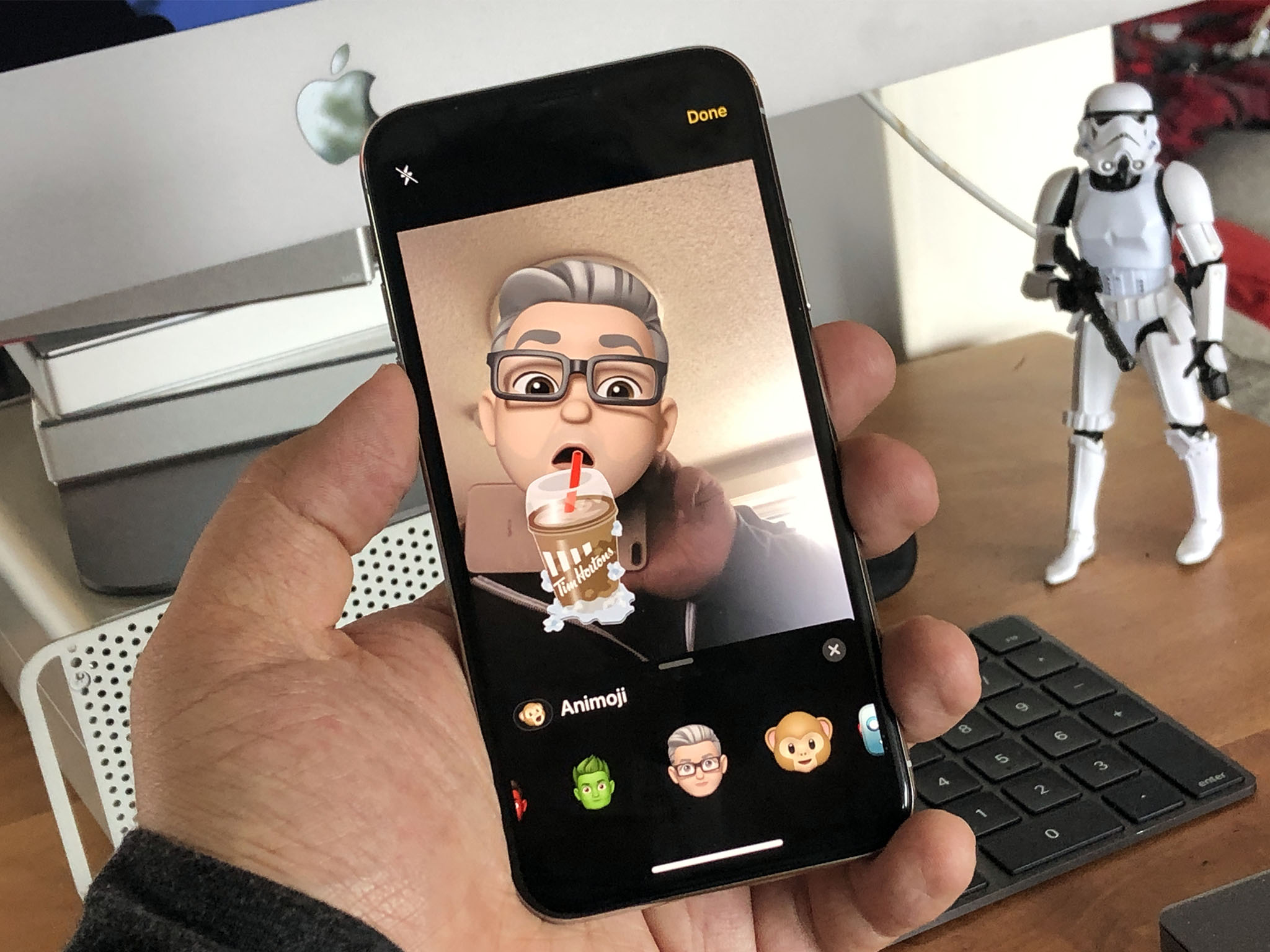
iOS 12
iPhone XS ships with iOS 12, Apple latest-generation mobile operating system. This is the world into which Apple is bringing iOS 12 for iPhone and iPad, which combines audacious new intelligence and assistance with fierce new protections for privacy and security.
It also contains foundational performance enhancements designed to make iOS software age as well as iPhone and iPad hardware; a giant leap forward in persistent, multi-person AR; proactive suggestions and voice-trigger-able workflows not just for core features but for any action in any app; much-needed improvements to notifications and the do-not-disturb system; full-on self and parental controls; fun new features for Messages like Memoji which put you not just into the emoji but into a new AR world.
iPhone XS Pricing and Availability
iPhone XS starts at $999 and iPhone XS Mac, $1099 for the 64GB versions in either silver, space gray, or gold. If you stream everything and keep all your stuff on the cloud, you might just be fine with that. Otherwise you'll want to check out the 256GB or all-new 512GB versions.

While those up-front prices are hitting premium laptop-levels, between Apple's Upgrade Program and new carrier leasing deals, there are a variety of options available in the U.S. to get, essentially, zero financing and low monthly payments. If you want to buy unlocked, yeah, sticker shock.
In many regions, with iPhone XS comes Apple Stores and AppleCare. For the last couple of years, Apple has been redoing the stores with better Genius support, new Creative Pros to help with non-technical support, and Apple Today as a hub for education and arts. There are all sorts of free classes, workshops, photo walks, and more. So much so, that it's impossible to accurately convey the true value of iPhone without considering the Apple Stores that come with them.
Standard Apple Care covers you against the usual issues for a year. Apple Care+, which costs a higher-than-usual $199 for iPhone XS, covers you for two years, including up to two $29 screen or $99 water/other repairs/replacements.
New this year are monthly payment options for AppleCare+ and new Theft and Loss Protection. Thanks to Find my iPhone, which you have to turn on at time of purchase, Apple can digitally verify a stolen and wiped iPhone and so doesn't need to make you jump through hoops, including filling out police reports, to get a replacement. There is, however, a $299 deductible.
If, like me, you're not always as careful with your technology as you should be, then you, like me, might extract significant value from AppleCare+ over the course of a couple years.
Since I'm both clumsy and paranoid, I always get AppleCare+ and I've made use of it enough that I consider it a reasonable investment.
Apple Store's also offer a wide range of free classes and programs to help get you started with your first iPhone and even your first creative professional career. It's part of the value you're paying for when you get an iPhone, so take advantage of it.
Apple may charge premium prices, but it also provides tremendous value in exchange, both through it's ecosystem of compatible products and services, and its support.
iPhone XS Conclusion
Eleven years ago, Apple launched the original iPhone and kicked off a decade of modern, mobile revolution. Last year, Apple launched the iPhone X, intent on kicking off the next decade. The former rode the convergence of ubiquitous cellular networking, multitouch interface, and miniaturization to become the most successful product in the history of products. As effectively limitless broadband, augmented reality, and artificial intelligence from silicon to software now begin to converge, the latter is trying to do the same. And, Apple's next step towards that future is this year's iPhone XS.
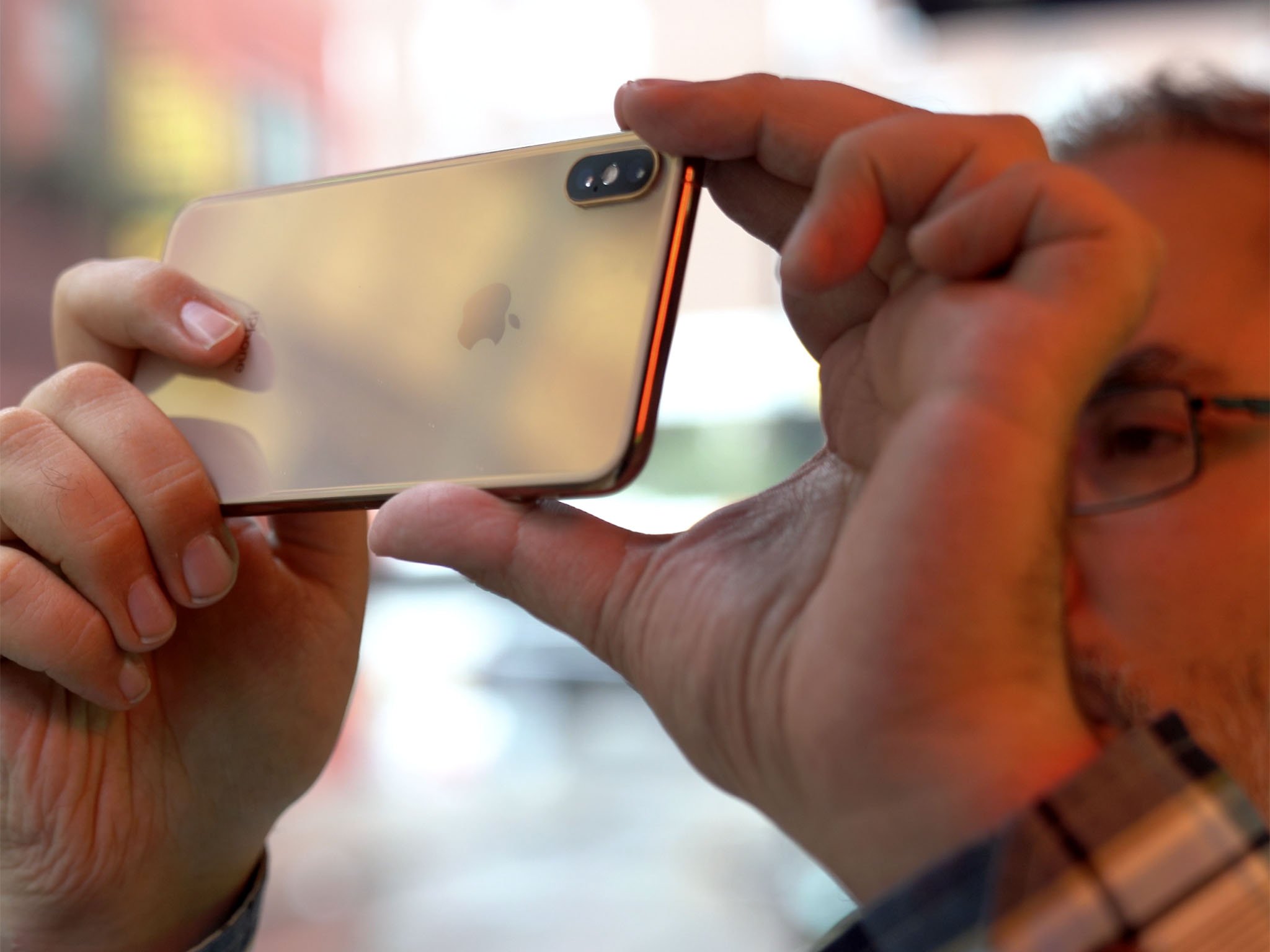
Yes, it's an S year again. After taking a break and naming last year's swan-song to bezels and home buttons the iPhone 8 instead of the iPhone 7s, Apple is back to it's number (or, I guess, numeral in this case), number (numeral) + S convention. For some, that S has come to connote a minor, insignificant, even boring iteration on the previous year's hardware. For others, that S represents a polish, perfection, and boost in performance that makes this year's hardware the one to get.
Looking back on the history of speed boosts, Siri, Touch ID, 3D Touch, and inductive charging, and it's pretty clear that when the casing becomes a known target, the various platform teams from chipset to camera, can hit really hit those internal upgrades. Hard.
That's absolutely the case with iPhone XS, which gains the world's first 7-nanometer processor with A12 Bionic, faster Face ID, wider stereo speakers, Gigabit LTE, dual-SIM, Smart HDR, adjustable background blur, stereo video recording, IP68 water resistance, a new gold finish.
And, oh yeah, an all-new 6.5-in Max model.
Unlike last year, where Apple positively strutted out iPhone X on stage — hey, if I was 2017 Tim Cook and I somehow managed to snatch 2018 Tim Cook's iPhone and launch it early, I'd have strutted as well — this year the company was far more careful. A new iPhone X, not a new iPhone.
In other words, Apple didn't position either the starting-at-$999 XS or the starting-at-$1099 XS Max as revolutionary. Given how much technology Apple pulled forward into iPhone X last year, there was simply no way it could could have, through engineering and marketing. What Apple did do was quickly and carefully position it not as what's all new but as what inevitably comes next.
I don't think Apple intends iPhone X owners to rush out and upgrade to iPhone XS, industry insiders, tech enthusiasts, and those on yearly programs, will of course do just that. Rather, I think Apple intends these new models to appeal to those who didn't yet make the leap to an all-new iPhone. Those who always avoid rev. A boards, or who stuck with Android or with the Home button, or who were simply waiting on a bigger screen.
And, I think for them, iPhone XS or iPhone XS Max are exactly the new phones they've been waiting for.

Rene Ritchie is one of the most respected Apple analysts in the business, reaching a combined audience of over 40 million readers a month. His YouTube channel, Vector, has over 90 thousand subscribers and 14 million views and his podcasts, including Debug, have been downloaded over 20 million times. He also regularly co-hosts MacBreak Weekly for the TWiT network and co-hosted CES Live! and Talk Mobile. Based in Montreal, Rene is a former director of product marketing, web developer, and graphic designer. He's authored several books and appeared on numerous television and radio segments to discuss Apple and the technology industry. When not working, he likes to cook, grapple, and spend time with his friends and family.
